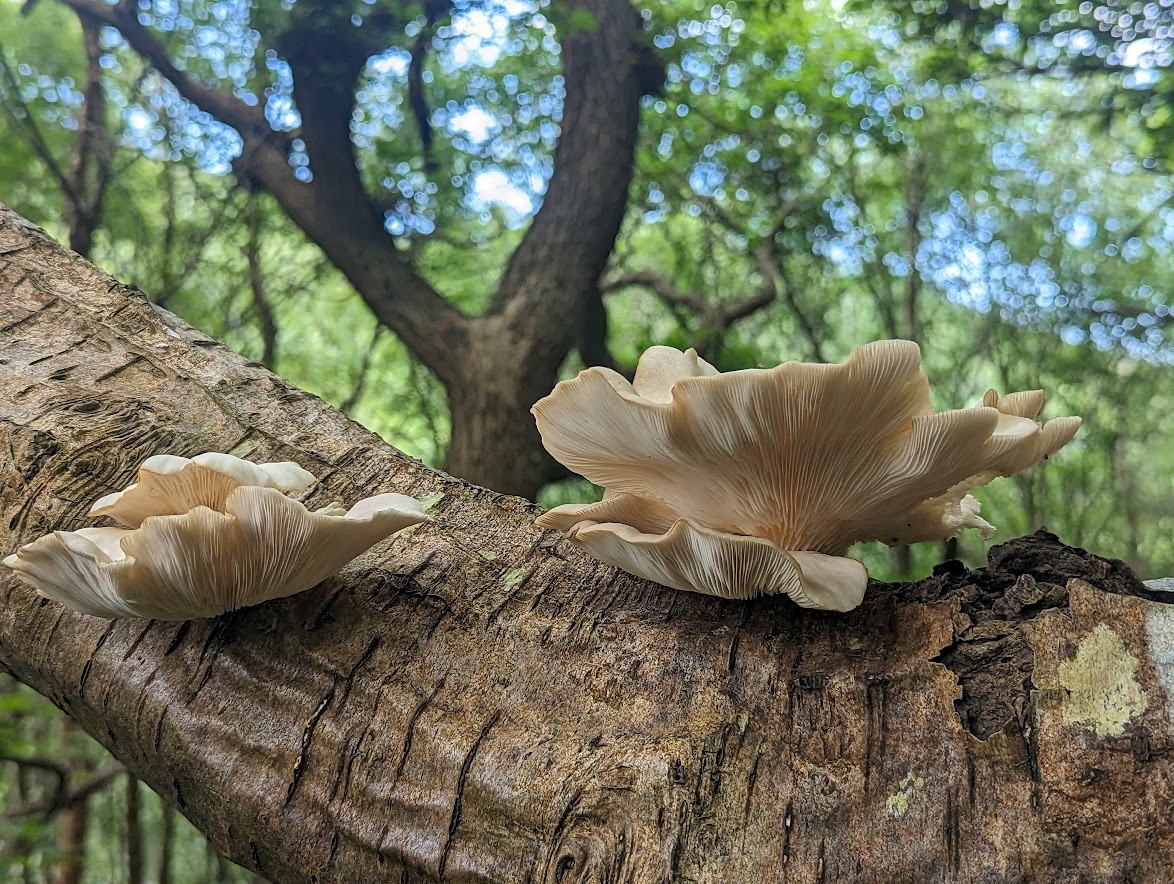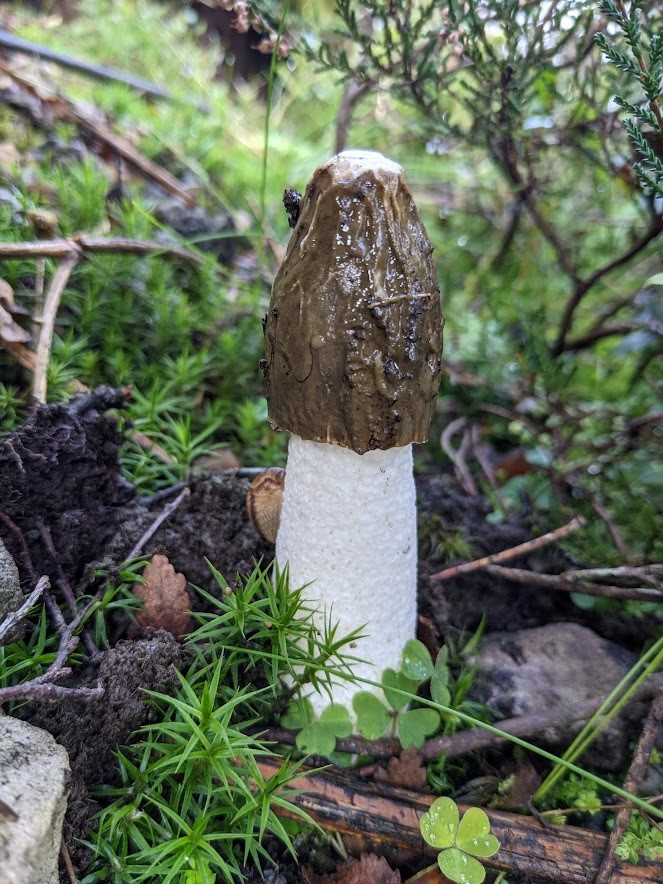In this latest blog, Newcastle University Student, Ellie Davison, explores some of the mushrooms you may encounter in the region.
What is a mushroom?
A mushroom is the fruiting body of a fungus. This is where spores are produced and dispersed, if the species produces mushrooms at all! The vast majority of the fungus resides within the substrate it is growing in and will exist of a network of incredibly thin strands of hyphae which make up the mycelium. Mushrooms are a result of these hyphal strands ‘felting together’, and this can be triggered when environmental conditions are right.
Mushrooms can appear year round. However, we get the most abundance and variety of mushrooms in autumn, triggered by the cooling temperatures and wetter conditions. Some species of mushrooms can appear incredibly rapidly by absorbing water and inflating their cells, which is why mushrooms are often found after rain. Once the first frost comes, the abundance and variety of mushrooms you see drastically reduces, because frost tolerance is an adaptation not all mushrooms have.
So, what sort of mushrooms might I see this autumn?
Fly Agaric
I couldn’t write this blog without mentioning the iconic fly agaric! This is your quintessential toadstool and perhaps the most recognised of all fungi. It is undeniably a very attractive mushroom, with a base colour ranging from orange to ruby red and white ‘spots’ across the cap. These spots are fragments of its ‘universal veil’. This veil covers and protects the mushroom when it is very young but breaks apart as it grows. These fragments can wash away from heavy rain. The name fly agaric comes from its historical use as an insecticide.
This mushroom is often associated with tales of elves, pixies and goblins. Its somewhat jolly appearance has led to it being depicted on Christmas cards since the Victorian era, although recent theories have suggested its links to Christmas goes much deeper than pure aesthetics. The fly agaric has hallucinogenic properties but is also toxic to humans. There are reports of Saami reindeer herders in northern Scandinavia feeding their reindeer fly agaric, and then collecting and drinking the reindeer’s urine. This would filter out the harmful toxins but still allow the herders to enjoy the hallucinogenic effects. Could this be where our Christmas tales of flying reindeer came from?


Shaggy Inkcap
Shaggy ink caps are a common but fascinating fungus. They go through autodigestion which is the process of their cap and gills liquefying into a black inky liquid. The liquid then mixes with rain which spreads the spores. The ink can be used as an art medium, a great example of which being the beautiful mushroom illustrations Collin Elder created for Merlin Sheldrake’s book, Entangled Life (a must-read for any fungi enthusiast!).
However, shaggy inkcaps have a darker side to them. Like many species of fungi, they are predatory and are capable of killing and consuming microscopic worms called nematodes. Along the fungus’ hyphae there are many microscopic, burr-like structures called “spiny balls” which the fungus uses to physically hit and injure the nematode. The fungus also produces toxins, and it is thought the physical damage caused by the spiny balls may enable the toxins to enter and kill the nematode more effectively.
Just to make this fungus even cooler – it is incredibly strong. Its mushrooms have been known to lift heavy paving stones and push their way through asphalt!


Oyster Mushroom
Another omnivore on our list! The oyster mushroom has stalks along its hyphae that produce a toxin that paralyses nematodes. The fungus can then enter and grow through the nematode and digest it.
There is a lot of excitement surrounding oyster mushrooms. Scientists have shown that they can digest an incredible range of substances – including cigarette butts, herbicide, petrol and used nappies! There is potential for this fungus to be a useful tool in dealing with waste, polluted soils, and even oil spills. However, this research is still in its infancy and results may not be as well replicated in the field as they are in the lab.

Common Stinkhorn
You will often smell a stinkhorn before you see it! The brown slime covering the cap stinks of something reminiscent of decaying flesh and blocked drains. This works out very well for the stinkhorn though, as the stench attracts flies who pick up and disperse spores that are found in the slime.
The stinkhorn certainly have a somewhat phallic appearance about them (hence their Latin name) and the Victorians were particularly offended by their existence. Etty Darwin, Charles Darwin’s daughter, was apparently so revolted by these mushrooms that she would go out to the woods around Darwin Estate and destroy them before they had the chance to spread, or to corrupt the minds of her young maids! In later life she even began a campaign to have all of the mushrooms removed from the English countryside. Unsurprisingly, this was unsuccessful and the stinkhorn remains a common but charismatic mushroom throughout the UK, Ireland and most of mainland Europe.

